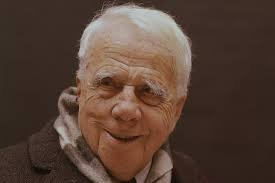Hedy Lamarr Biography: Date Of Birth and Early Life, Education, Family, Career, Networth Death.
Hedy Lamarr, born Hedwig Eva Maria Kiesler on November 9, 1914, was a woman of many talents and facets. Known primarily as a stunning Hollywood actress of the 1930s and 1940s, Lamarr was much more than just a pretty face. She was an inventor, a pioneer in wireless communications, and a woman who defied the societal norms of her time. This comprehensive biography delves into the fascinating life of Hedy Lamarr, exploring her date of birth, education, illustrious career, family life, and net worth.
Date of Birth and Early Life
Birth and Childhood
Hedy Lamarr was born on November 9, 1914, in Vienna, Austria-Hungary (now Austria). She came into the world during the tumultuous period of World War I, a time of great upheaval in Europe. Her parents, Emil Kiesler and Gertrud “Trude” Kiesler (née Lichtwitz), were both of Jewish descent, though they had converted to Catholicism.
Emil Kiesler was a successful bank director, while Trude was a pianist and Budapest native who came from an upper-class Jewish family. Growing up in a wealthy and cultured household, young Hedwig, as she was then known, was exposed to the arts, sciences, and intellectual pursuits from an early age.
Early Influences
Lamarr’s father played a significant role in nurturing her curiosity about the world. He would often take her on long walks, explaining the inner workings of various machines they encountered. This early exposure to technology and engineering would later prove instrumental in shaping Lamarr’s inventive mind.
Her mother, on the other hand, was determined to make her daughter a star. Recognizing Hedwig’s beauty and charm from a young age, Trude encouraged her daughter’s artistic pursuits, including acting and dancing.
Education
Formal Schooling
Hedy Lamarr’s formal education was typical for a girl of her social standing in early 20th century Vienna. She attended private schools, where she received a well-rounded education that included the arts, sciences, and languages. Lamarr was known to be an intelligent and curious student, with a particular aptitude for mathematics and sciences.
Theatrical Training
In addition to her regular schooling, Lamarr received training in the theatrical arts. She studied ballet and piano from a young age, further developing her artistic talents. As a teenager, she began to take acting classes, laying the foundation for her future career in cinema.
Self-Education and Lifelong Learning
Perhaps the most significant aspect of Lamarr’s education was her commitment to self-study and lifelong learning. Throughout her life, she maintained a keen interest in science and technology, reading widely on these subjects and engaging in her own experiments and inventions.
This self-directed learning would eventually lead to her groundbreaking work in frequency-hopping spread spectrum technology, demonstrating that Lamarr’s education extended far beyond her formal schooling and artistic training.
Career
Early Acting Career in Europe
Hedy Lamarr’s career in entertainment began in Europe, where she quickly made a name for herself as a rising star of the silver screen. Her breakthrough came with the controversial Czech film “Ecstasy” (1933), in which she portrayed a young woman married to an older man. The film gained notoriety for its nude scenes and depiction of the female orgasm, both groundbreaking for its time.
Despite the scandal surrounding “Ecstasy,” or perhaps because of it, Lamarr’s star was on the rise. She continued to work in European cinema, appearing in several German and Austrian productions.
Hollywood Stardom
In 1937, Lamarr fled her unhappy marriage to Austrian arms manufacturer Friedrich Mandl and made her way to London. There, she met Louis B. Mayer, the head of MGM Studios, who was scouting for talent. Impressed by her beauty and presence, Mayer offered her a Hollywood contract, and Lamarr set sail for America.
Upon arriving in Hollywood, Hedwig Kiesler was transformed into Hedy Lamarr, a name suggested by Mayer in reference to the beautiful silent film star, Barbara La Marr. Lamarr made her Hollywood debut in “Algiers” (1938) opposite Charles Boyer, and her exotic beauty immediately captivated American audiences.
Throughout the 1930s and 1940s, Lamarr starred in a string of successful films, including:
- “Lady of the Tropics” (1939)
- “Boom Town” (1940)
- “Comrade X” (1940)
- “Ziegfeld Girl” (1941)
- “White Cargo” (1942)
- “Tortilla Flat” (1942)
- “Samson and Delilah” (1949)
Her role in Cecil B. DeMille’s “Samson and Delilah” is often considered the pinnacle of her acting career, showcasing both her beauty and her acting skills in what became one of the highest-grossing films of 1950.
Later Career and Decline
As Lamarr aged, film roles became scarcer. The Hollywood system, which had once celebrated her as “the most beautiful woman in the world,” was notoriously unkind to aging actresses. Her last major American film was “The Story of Mankind” (1957), although she continued to appear in occasional movies and television shows until the late 1950s.
Inventor and Innovator
While Lamarr’s acting career was impressive, her contributions to technology and invention are perhaps her most enduring legacy. During World War II, Lamarr learned that radio-controlled torpedoes could easily be jammed and set off course. Drawing on her knowledge of weapons from her first marriage and her innate understanding of technology, she set out to find a solution.
Collaborating with composer George Antheil, Lamarr developed a frequency-hopping system that could prevent torpedo signals from being jammed. Their invention used a mechanism similar to piano player rolls to unpredictably change the signal sent to the torpedo, making it incredibly difficult for enemies to detect or jam the signal.
Lamarr and Antheil patented their “Secret Communication System” in 1942, but the U.S. Navy didn’t adopt the technology at the time. However, the principles of their invention later became a crucial component in the development of GPS, Wi-Fi, and Bluetooth technology.
It wasn’t until decades later that Lamarr received recognition for her groundbreaking work. In 1997, she was honored with the Electronic Frontier Foundation Pioneer Award, and in 2014, she was posthumously inducted into the National Inventors Hall of Fame.
Family
Marriages and Children
Hedy Lamarr’s personal life was as colorful and complex as her professional one. She was married and divorced six times throughout her life:
- Friedrich Mandl (1933-1937): An Austrian military arms merchant and munitions manufacturer. This marriage ended when Lamarr fled to Paris, disguised as her maid.
- Gene Markey (1939-1941): An American screenwriter and producer. They adopted a son, James Lamarr Markey, born in 1939.
- John Loder (1943-1947): An actor with whom she had two children: Denise Loder (born 1945) and Anthony Loder (born 1947).
- Ernest “Ted” Stauffer (1951-1952): A nightclub owner, restaurateur, and former bandleader.
- W. Howard Lee (1953-1960): A Texas oilman who went on to marry film star Gene Tierney.
- Lewis J. Boies (1963-1965): Lamarr’s lawyer at the time.
Relationship with Her Children
Lamarr’s relationship with her children was often strained. Her daughter, Denise, later said that Lamarr was emotionally distant and more focused on her career than on motherhood. However, her son Anthony maintained a closer relationship with his mother and worked to preserve her legacy after her death.
Net Worth
Estimating Hedy Lamarr’s net worth is challenging due to the passage of time and the complexities of her financial situation throughout her life. At the height of her Hollywood career in the 1940s, Lamarr was one of the highest-paid actresses in the industry, commanding salaries of up to $30,000 per week (equivalent to approximately $550,000 in 2023 dollars).
However, despite her high earnings, Lamarr faced financial difficulties later in life. Her later years were marked by failed business ventures, legal troubles, and a decline in acting work. By the time of her death in 2000, her estate was valued at approximately $3.3 million.
It’s worth noting that the true value of Lamarr’s contributions extends far beyond her financial net worth. The technology she invented, which forms the basis for secure Wi-Fi, Bluetooth, and GPS communications, has been estimated to be worth $30 billion. Unfortunately, because the patent had expired before the technology came into widespread use, Lamarr never profited financially from this invention.
Later Life and Legacy
Retirement and Controversies
After retiring from the film industry, Lamarr lived a relatively reclusive life. In 1966, she was arrested for shoplifting in Los Angeles, but the charges were eventually dropped. This incident, however, damaged her public image and contributed to her retreat from the public eye.
In 1971, Lamarr sued Warner Bros. for $10 million, claiming that the Mel Brooks comedy “Blazing Saddles” parodied her name without permission. The case was settled out of court for an undisclosed sum.
Autobiography and Final Years
In 1966, Lamarr published her autobiography, “Ecstasy and Me,” which became a bestseller. However, she later sued the publisher, claiming that much of the book was fabricated by its ghostwriter.
Lamarr spent her final years living in Florida, where she maintained sporadic contact with her children and a few close friends. She rarely made public appearances but continued to work on inventions, including a modified traffic stoplight and a tablet that would dissolve in water to create a carbonated drink.
Death and Posthumous Recognition
Hedy Lamarr passed away on January 19, 2000, at the age of 85, in Casselberry, Florida. After her death, her ashes were spread in Vienna’s Central Cemetery, honoring her Austrian roots.
In the years following her death, there has been a renewed interest in Lamarr’s life and work, particularly her contributions to technology. Several books, documentaries, and films have been produced about her life, including:
- “Hedy’s Folly: The Life and Breakthrough Inventions of Hedy Lamarr, the Most Beautiful Woman in the World” by Richard Rhodes (2011)
- “Bombshell: The Hedy Lamarr Story,” a documentary film (2017)
- “Hedy Lamarr: An Incredible Life,” a graphic novel by William Roy and Sylvain Dorange (2018)
In 2019, Apple TV+ announced the development of a limited series about Lamarr’s life, starring and executive produced by Gal Gadot.
Conclusion
Hedy Lamarr’s life was one of stark contrasts and remarkable achievements. Born in 1914 in Vienna, she rose to become one of Hollywood’s most glamorous stars of the 1940s. Yet, behind the scenes, she was a brilliant inventor whose work laid the foundation for some of the most important technological innovations of the 20th and 21st centuries.
Her journey from European film starlet to Hollywood icon, and from actress to inventor, defied the expectations placed on women of her era. Despite facing numerous personal and professional challenges, including six marriages and a sometimes tumultuous relationship with the film industry, Lamarr never lost her innovative spirit or her desire to make meaningful contributions to the world.
Today, Hedy Lamarr is remembered not just for her stunning beauty or her film career, but for her brilliant mind and her groundbreaking inventions. Her life serves as an inspiration, reminding us that brilliance can be found in unexpected places and that one person’s ideas can indeed change the world.
As we continue to benefit from the technologies that stemmed from her inventions, Hedy Lamarr’s legacy lives on, a testament to the power of curiosity, creativity, and perseverance. She remains a symbol of the untapped potential of women in science and technology, and her story continues to inspire new generations of inventors and innovators around the world.
Frequently Asked Questions on Hedy Lamarr Biography
1. Who was Hedy Lamarr?
- Hedy Lamarr was an Austrian-American actress and inventor, best known for her roles in classic Hollywood films and her groundbreaking invention of frequency-hopping technology, which laid the foundation for modern wireless communication.
2. What is Hedy Lamarr famous for?
- Hedy Lamarr gained fame both for her acting career in Hollywood during the 1930s and 1940s, and for co-inventing a frequency-hopping system that became the precursor to modern technologies like Wi-Fi, Bluetooth, and GPS.
3. When and where was Hedy Lamarr born?
- Hedy Lamarr was born on November 9, 1914, in Vienna, Austria.
4. What are some of Hedy Lamarr’s most famous films?
- Some of her most famous films include:
- Algiers (1938)
- Boom Town (1940)
- Samson and Delilah (1949)
- White Cargo (1942)
5. What did Hedy Lamarr invent?
- Hedy Lamarr co-invented a frequency-hopping spread spectrum communication system during World War II, which was intended to prevent the interception of radio-controlled torpedoes. This technology later contributed to the development of secure wireless communication systems.
6. Was Hedy Lamarr recognized for her invention during her lifetime?
- Although her invention was not widely recognized during her lifetime, Lamarr received posthumous recognition. In 1997, she and her co-inventor George Antheil were honored with the Electronic Frontier Foundation (EFF) Pioneer Award for their work on spread spectrum technology.
7. When did Hedy Lamarr pass away?
- Hedy Lamarr passed away on January 19, 2000, at the age of 85 in Casselberry, Florida, USA.
8. Did Hedy Lamarr have children?
- Yes, Hedy Lamarr had three children: James Loder, Denise Loder, and Anthony Loder.
9. What is Hedy Lamarr’s legacy today?
- Hedy Lamarr is remembered both as a stunning Hollywood icon and as a brilliant inventor whose work contributed to modern-day communication technologies like Wi-Fi, Bluetooth, and GPS. Her life is celebrated for breaking the stereotype of “beauty without brains.”
10. Is there a documentary about Hedy Lamarr?
- Yes, the documentary “Bombshell: The Hedy Lamarr Story” (2017) explores her life, her acting career, and her contributions to technology, shedding light on her lesser-known achievements as an inventor.







